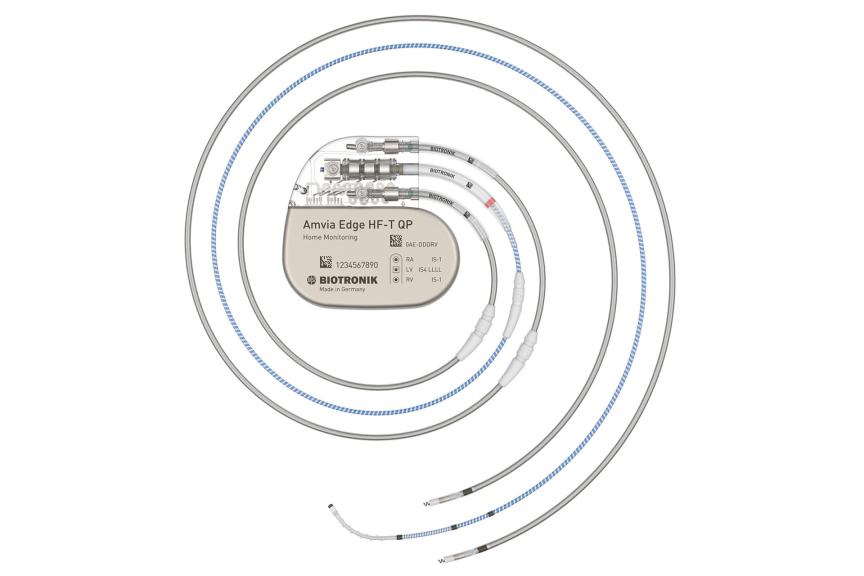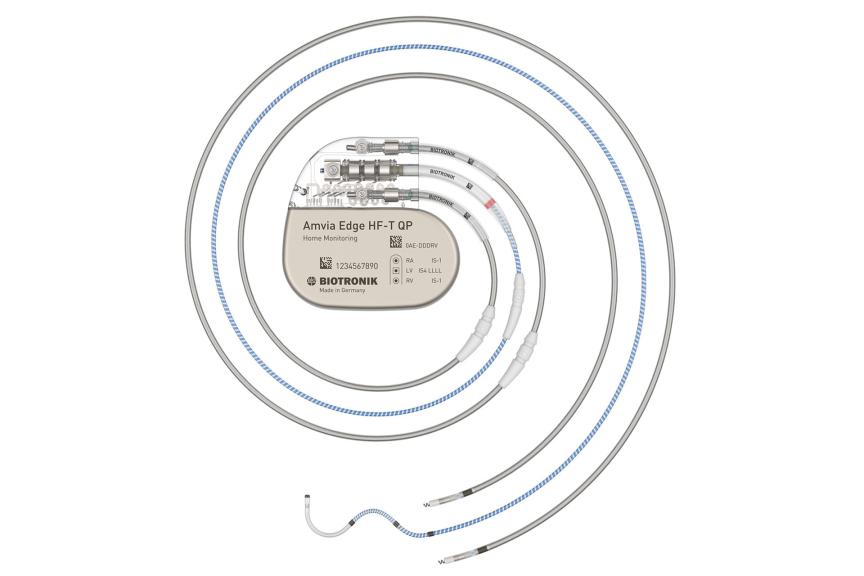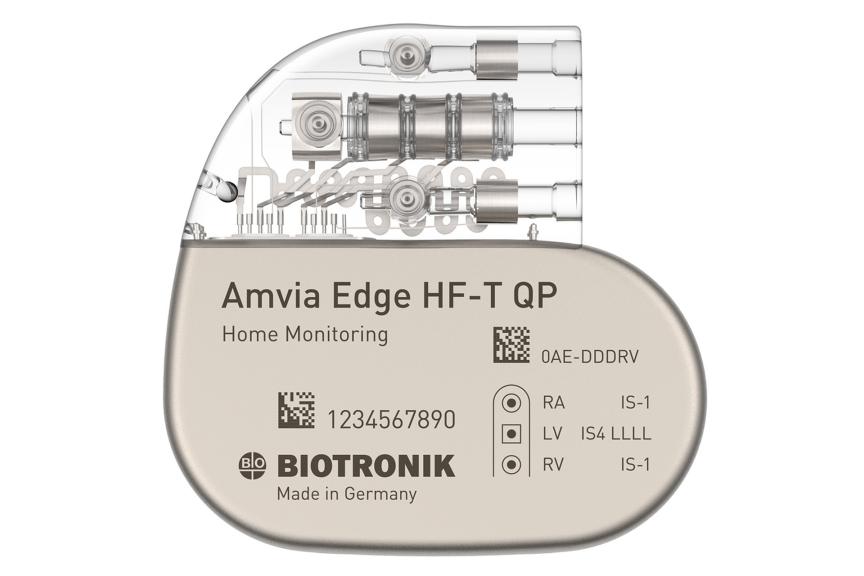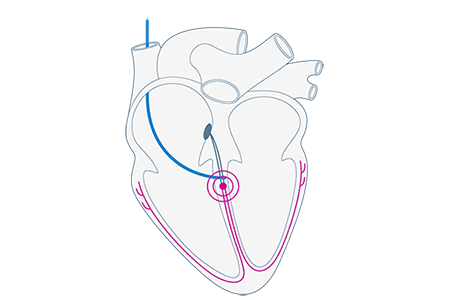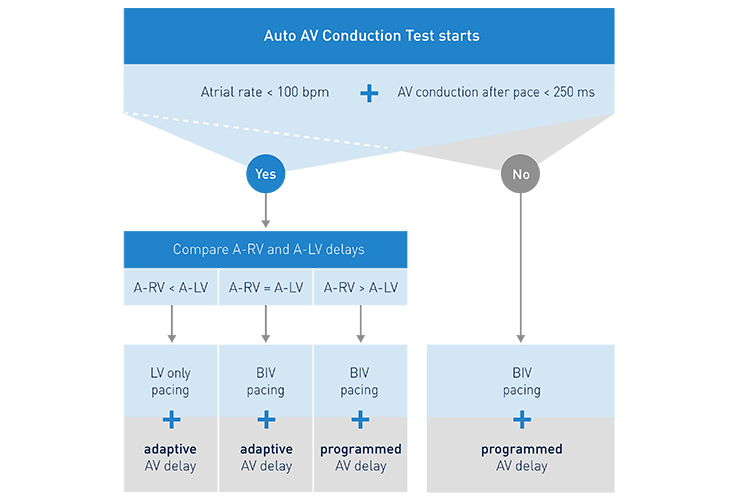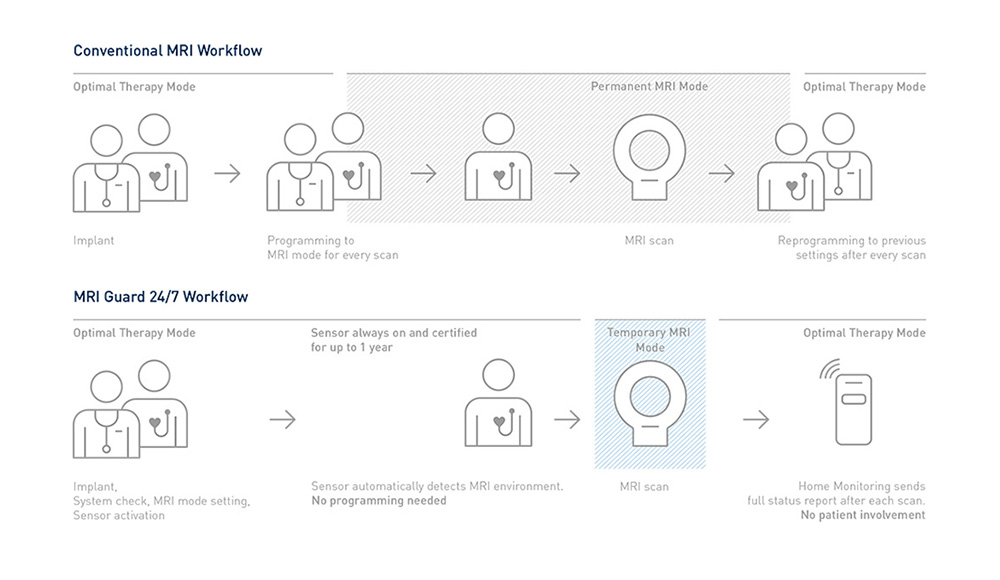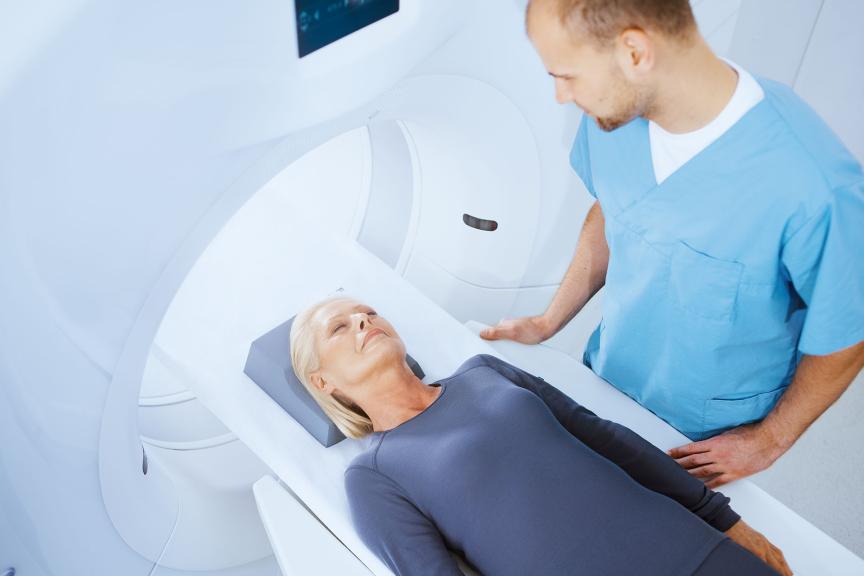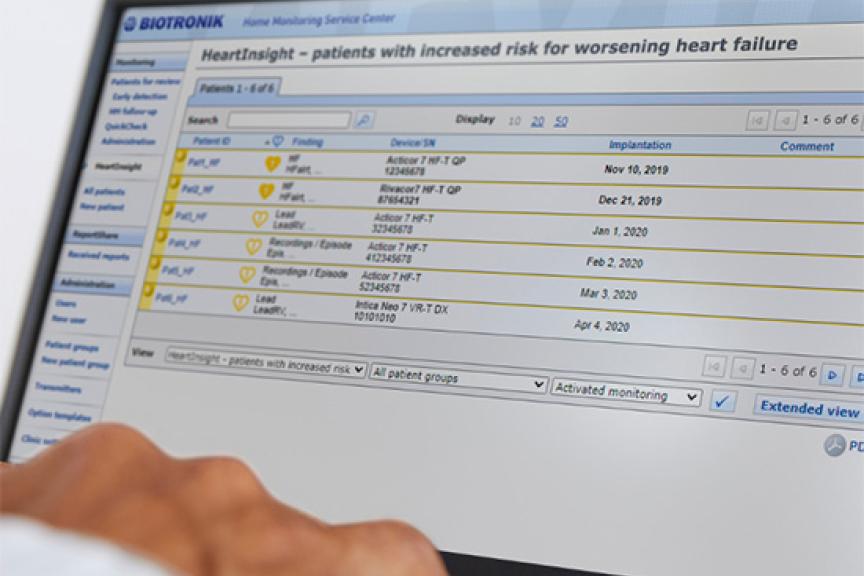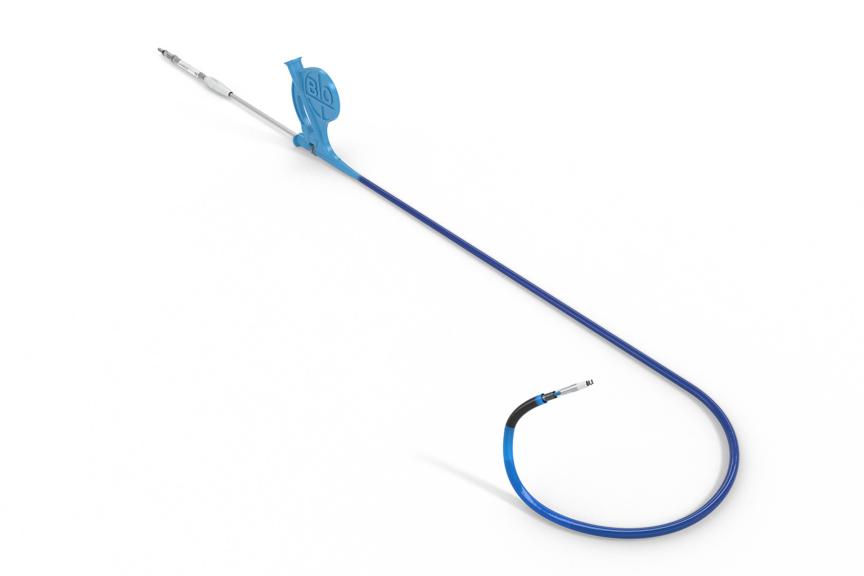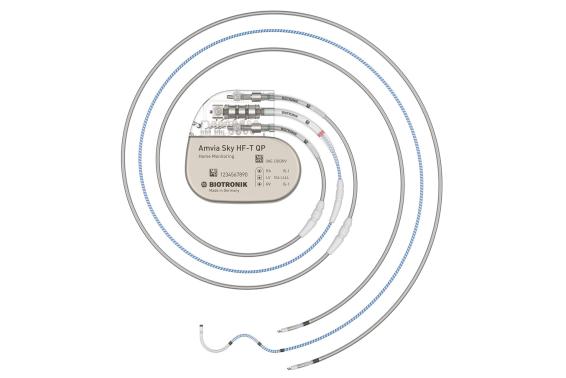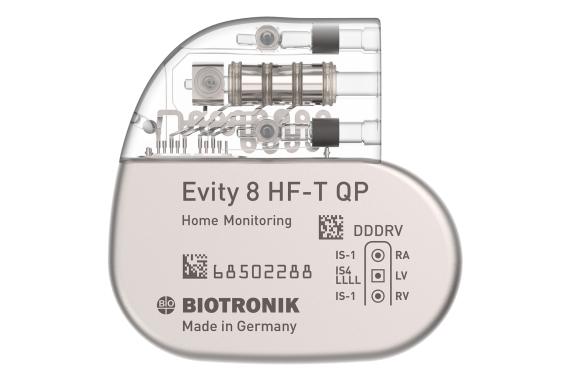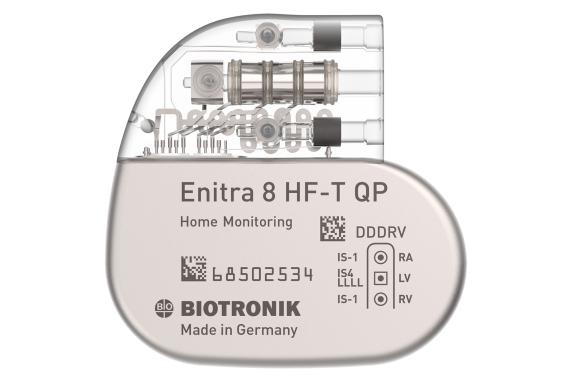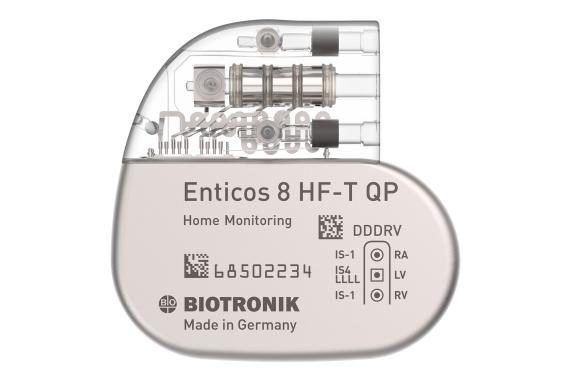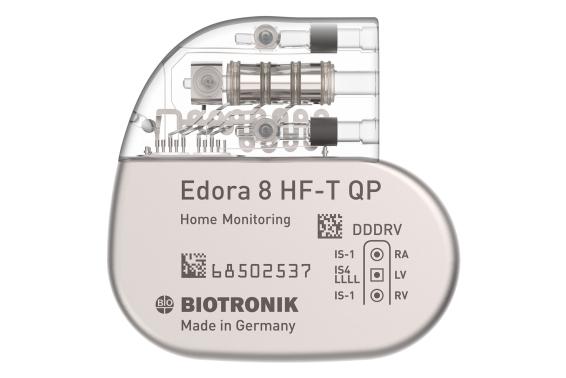Amvia Edge HF-T QP
With a 30% non-response rate to CRT1 , therapy optimization is essential for clinicians taking care of CRT patients. From the implantation to managing individual patients, accommodating each condition and need is both demanding and time-consuming for healthcare teams.
Amvia Edge CRT-P offers a complete set of options to address your and your patients’ needs – designed to enhance CRT response. From the largest choice of LV pacing polarities2 to unique rate and CRT adaptation features, Amvia Edge CRT-P offers an automatic and simple-to -use3 way to optimize patient response. Amvia Edge is the first CRT-Pacemaker approved for left bundle branch area pacing (LBBAP)2, providing an alternative method to deliver physiologic therapy to your heart failure patients. At the same time, Amvia Edge CRT-P automates and streamlines routine tasks during implantation, in-office follow-ups, remote monitoring, and MRI workflows.
By simplifying and automating time-intensive workflows, Amvia Edge CRT-P can help you save time4 – so you can focus on other clinically relevant tasks, while offering your patients the potential of improved care and greater quality of life.
Product Highlights
Achieve Physiologic Pacing
Amvia Edge is the first CRT-Pacemaker approved for left bundle branch area pacing (LBBAP)2, providing an alternative method to deliver physiologic therapy to your heart failure patients
Personalize Therapy
Amvia Edge CRT-P reduces the effort required4 by offering a comprehensive set of automatic options to individualize physiologic treatment according to each patient’s needs
Streamline Care Pathways
Amvia Edge CRT-P offers unique automatic and remote technologies for your heart failure patients, potentially streamlining time-consuming workflows along the entire patient care pathway: from implantation and follow-ups to remote monitoring and outstanding MRI access
Downloads & Related Links
Contact Us
References
1) Naqvi SY, Jawaid A, Goldenberg I, and Kutyifa V. Non-response to Cardiac Resynchronization Therapy. Curr Heart Fail Rep. 2018; 15: 315-321. 2) BIOTRONIK Amvia HF-T QP technical manual, Medtronic Percepta Quad CRT-P MRI SureScan™ manual; Boston Scientific Visionist X4™ technical manual; Abbott Allure Quadra MP RF™ user’s manual; MicroPort REPLY CRT-P™ implant manual. 3) Data on file. 4) Data on file. 4) Data on file. 5) Vijayaraman P, Herweg B, Verma A, et al. Rescue left bundle branch area pacing in coronary venous lead failure or nonresponse to biventricular pacing: Results from International LBBAP Collaborative Study Group. Heart Rhythm. 2022; 19(8): 1272-1280. 6) Li X, Qiu C, Xie R, et al. Left bundle branch area pacing delivery of cardiac resynchronization therapy and comparison with biventricular pacing. ESC Heart Fail. 2020; 7(4): 1711–1722. 7) Wang Y, Gu K, Qian Z, et al. The efficacy of left bundle branch area pacing compared with biventricular pacing in patients with heart failure: A matched case-control study. J Cardiovasc Electrophysiol. 2020; 31(8): 2068–2077. 8) De Pooter J, Ozpak E, Calle S, et al. Initial experience of left bundle branch area pacing using stylet-driven pacing leads: A multicenter study. J Cardiovasc Electrophysiol. 2022; 33(7): 1540-1549. 9) Lindovska M, Kameník L, Pollock B, et al. Clinical observations with Closed Loop Stimulation pacemakers in a large patient cohort: the CYLOS routine documentation registry (RECORD). Europace. 2012; 14: 1587–1595. 10) Santini M, Ricci R, Pignalberi C, et al. Effect of autonomic stressors on rate control in pacemakers using ventricular impedance signal. Pacing Clin Electrophysiol. 2004; 27: 24-32. 11) Proff J, Merkely B, Papp Ret al. Impact of closed loop stimulation on prognostic cardiopulmonary variables in patients with chronic heart failure and severe chronotropic incompetence: a pilot, randomized, crossover study Europace (2021) 23, 1777–1786. 12) Malinowski K. Interindividual comparison of different sensor principles for rate adaptive pacing PACE. 1998; 21(PT II): 2209-2213. 13) Data on file. 14) BIOTRONIK Amvia Edge Technical Manual. 15) A/R/LV: 2.5 V/0.4 ms. 60 bpm, 500 Ω; A: pacing: 10%; RV: pacing: 50%, LV: pacing: 100%; Home Monitoring: OFF, QuickCheck: OFF; RF telemetry: OFF; CRT AutoAdapt: ON. 16) Nattel S, Burstein B, Dobrev D. Atrial remodeling and atrial fibrillation: mechanisms and implications. Circ Arrhythm Electrophysiol. 2008; 1(1): 62-73. 17) Data on file. 18) Varma N, Epstein AE, Irimpen A, et al. Efficacy and safety of automatic remote monitoring for implantable cardioverter-defibrillator follow-up: the Lumos-T Safely Reduces Routine Office Device Follow-up (TRUST) trial. Circulation. 2010; 122(4): 325-332. 19) Mabo P, Victor F, Bazin P, et al. A randomized trial of long-term remote monitoring of pacemaker recipients (the COMPAS trial). Eur Heart J. 2012; 33(9): 1105-1111. 20) Data on file. 21) Mullane S, Michaelis K, Henrickson C, et al. Utilization and programming of an automatic MRI recognition feature for cardiac rhythm management devices. Heart Rhythm. O2. 2021; 2: 132–137. 22) Siddamsetti S, Shinn A, Gautam S. Remote programming of cardiac implantable electronic devices: a novel approach to program cardiac devices for magnetic resonance imaging. J Cardiovasc Electrophysiol. 2022;33(5):1005–1009. 23) Ricci RP, Morichelli L, Quarta L, et al. Long-term patient acceptance of and satisfaction with implanted device remote monitoring, Europace. 2010; 12(5): 674-679. 24) Watanabe E, Yamazaki F, Goto T, et al. Remote management of pacemaker patients with biennial in-clinic evaluation: Continuous Home Monitoring in the Japanese At-Home study: A randomized clinical trial. Circ Arrhythm Electrophysiol. 2020; 13(5): e007734. doi: 10.1161/CIRCEP.119.007734. 25) Data on file. 26) Data on file. 27) A/R/LV: 2.5 V/0.4 ms. 60 bpm, 500 Ω; A: pacing: 10%; RV: pacing: 50%, LV: pacing: 100%; Home Monitoring: OFF, QuickCheck: OFF; RF telemetry: OFF; CRT AutoAdapt: ON. 28) Limited Warranty for BIOTRONIK Cardiac Implantable Electronic Devices; Medtronic Limited Warranty Summary; Boston Scientific Limited Warranty Information and Forms; Abbott CRM Warranty Procedures Reference Manual; MicroPort REPLY CRT-P™ implant manual.

